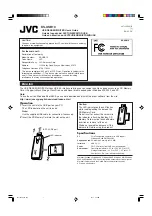
Operating Manual
Page 63 / 116
Copyright © REA Elektronik
REA ScanCheck 3n
V 1.2.0 24/02/2020
REA
VERIFIER
5.4 Setting / selection of the correct measuring aperture
For correct code testing, the measurement should be performed with a fitting measuring aperture.
In accordance with ISO/IEC 15416, the size of the measuring aperture should always be smaller
than 80 % of the X module size of the bar code to be measured, and is always additionally cited in
the measurement result. However, it is necessary to consider that the measuring aperture is also
stipulated by specifications (e.g. GS1 specification) with some code types and applications.
The REA ScanCheck 3n offers code testing with a selection of four different aperture settings.
The three apertures 6, 8 and 10 mil are always available. The 20 mil aperture is only optionally
available and requires connection of the mechanical 20 mil adapter foot.
On the basis of the aperture selection by standard (aperture smaller than 80% of the X module
size), the X module width in the code for the selected measuring apertures should not be smaller
than specified in the following table:
Aperture
6 mil:
X>= 187 µm (0.187 mm)
Aperture
8 mil:
X>= 250 µm (0.250 mm)
Aperture
10 mil:
X>= 312 µm (0.312 mm)
Aperture
20 mil:
X >= 625 µm (0.625 mm)
Good to know
1 mm is 1000 µm, 1 µm is 0.001 mm, 1 mil is 25.4 µm or 0.0254 mm
In principle, code symbols with large X module sizes can always be read and checked with a
smaller measuring aperture than the assigned one. Conversely, though, small codes should never
be measured with an aperture that is too big.
















































